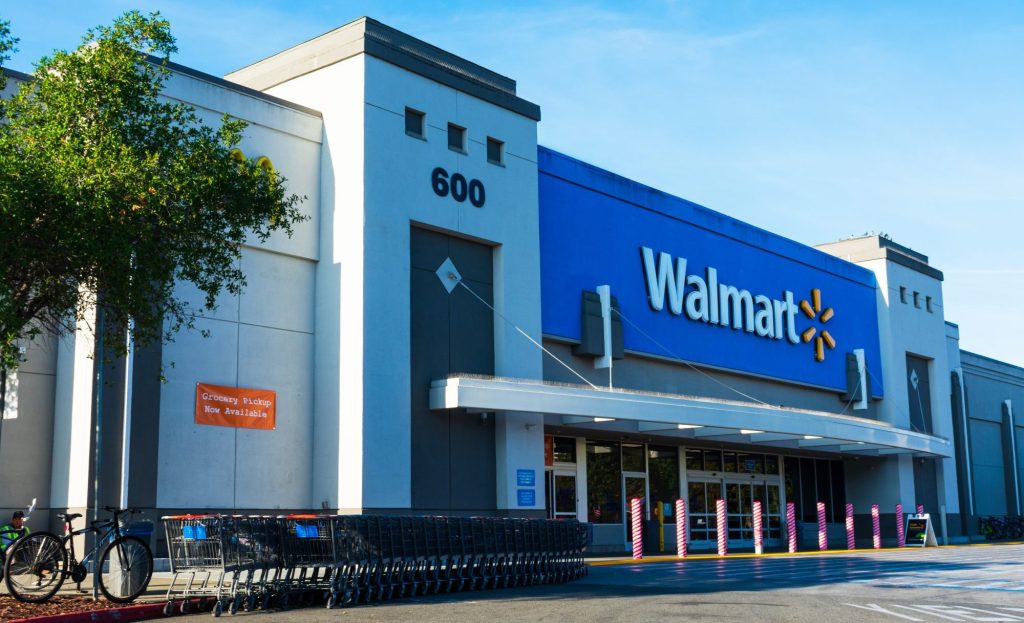How Walmart built a playbook for deploying thousands of EVs and charging stations
With no one-size-fits-all solution, the retailer ran quick tests and leaned on feedback from employees. Read More

- Walmart uses around 2,000 electric vehicles from Ford and GM for last-mile deliveries from stores.
- Electric vehicles won out over gas alternatives after a total cost of ownership analysis.
- To speed deployment, the company’s playbook emphasizes clarity and transparency.
When the last-mile delivery team at Walmart began to craft plans to scale service, it faced problems only behemoths have to contend with: which vehicles were right for a network of 4,700 U.S. stores and 1.6 million employees, and if the company decided to go electric, could it actually set up charging infrastructure in all those locations?
“The complexity of Walmart is that we’re everywhere,” said Sai Teja Yerapothina, the company’s senior director for last-mile delivery, strategy and operations. “And we deliver everything from hot chickens to 75-inch TVs to prescriptions.”
Around four years later, Walmart is bringing groceries, electronics and other goods to customers in 2,000 electric vans that are charged at stores.
At last week’s Trellis Impact 25 event, Yerapothina shared details of how the company made the move.
Selecting the ride
Walmart’s leaders impose tough requirements on the returns of every investment, so Yerapothina’s team had to get granular in its assessment of vehicle options. To estimate the total cost of ownership, they factored in everything from vehicle price and energy used to resale value, maintenance and time spent traveling to gas stations.
“We ran various different cost models about what this would mean for the business, for our customers, for our associates,” said Yerapothina. “EVs turned out to be our cheapest option and also the most sustainable option. So it was an easy decision for us.”
Today, Walmart contracts with Ford and GM for its fleet of last-mile delivery vehicles.
Infrastructure experiments
Level two charging, which provides speeds in the 10-kilowatt range and can recharge a vehicle overnight, was sufficient for the fleet. It is also cheaper, because the cost of electricity is often lower at night.
Beyond that, things got complicated. Permitting requirements differ across regions, as do the utilities involved. In addition, even nearby stores have slightly different designs. Some buildings are owned; others are leased. Parking lots can be for the sole use of Walmart customers or shared with neighboring businesses. “Every single location came with a different challenge,” said Yerapothina.
Rather than overanalyze the situation, his team began by deploying charging stations to a few locations then closely monitoring the results. “The best way we learn is we put something out there in the real world, give it to our associates and ask for feedback,” explained Yerapothina.
Wi-fi signals were one challenge they encountered. Sometimes the best spot for a charger lies beyond a store’s Wi-Fi range, and that required the team to equip some with cell-signal connections. The connectivity allows custom-built Walmart software to monitor the status of the charger and any vehicles connected to it.
Building the playbook
Over time, the last-mile team worked with colleagues in energy and software to build a playbook that guided the expansion of the charging network to thousands of stores. They also established standards that hardware and software vendors need to comply with.
Though the playbook identifies preferred locations for chargers, it isn’t prescriptive. “Because the best way may not always be the right way for every location,” said Yerapothina. “The final approval of where a charger would go and the other design decisions was left to store managers.”
Guiding design principles also include simplicity and transparency. “We start with: Is this simple enough that I could stand with an early associate in a store and explain to them in 30 seconds?” said Yerapothina.
“Always start with the why,” he added. For example, some drivers switched off the one-pedal driving feature, which uses resistance in the motor to simultaneously brake and recharge the battery. The team responded by explaining the benefits of the approach, which include lower charging costs and reduced brake wear. “We’ve seen a huge uptick in adoption,” noted Yerapothina.
Next up: Drones
With the last-mile EV fleet in place, Yerapothina’s to-do list now turns to building out drone delivery. The company has fulfilled around 300,000 orders over the past few years using drones from stores in Dallas, Houston and Arkansas.
For single-family homes, it’s a relatively straightforward proposition to drop deliveries in the backyard. Yerapothina said the company is still working on a solution for multi-unit buildings.
“There is a future where customers are oblivious to the mode,” he predicted. “They just say, this is the speed I want it in. And then the retailer figures out how to get it there — and drones could be one of those options.”

Subscribe to Trellis Briefing
Featured Reports

The Premier Event for Sustainable Business Leaders
















